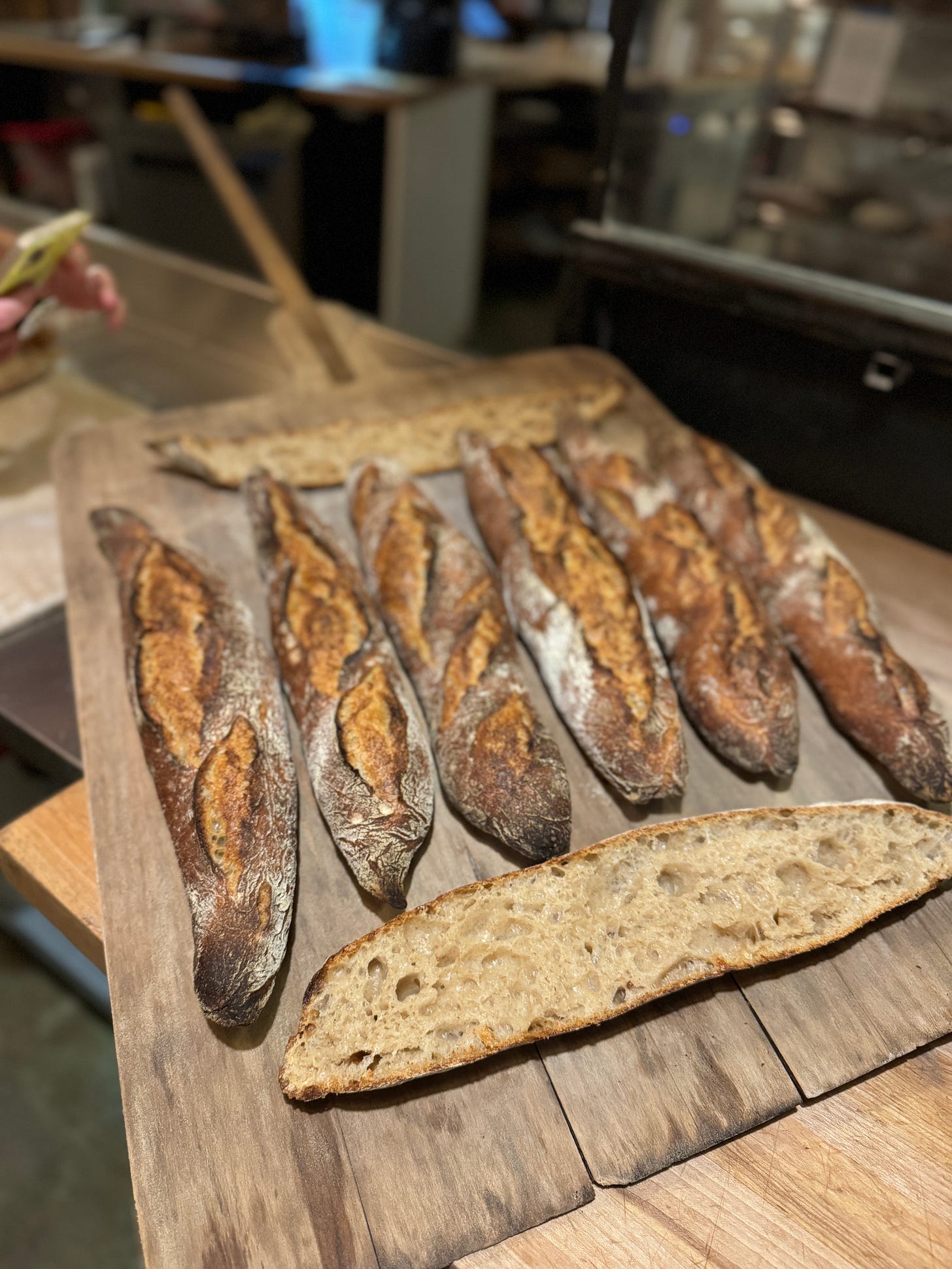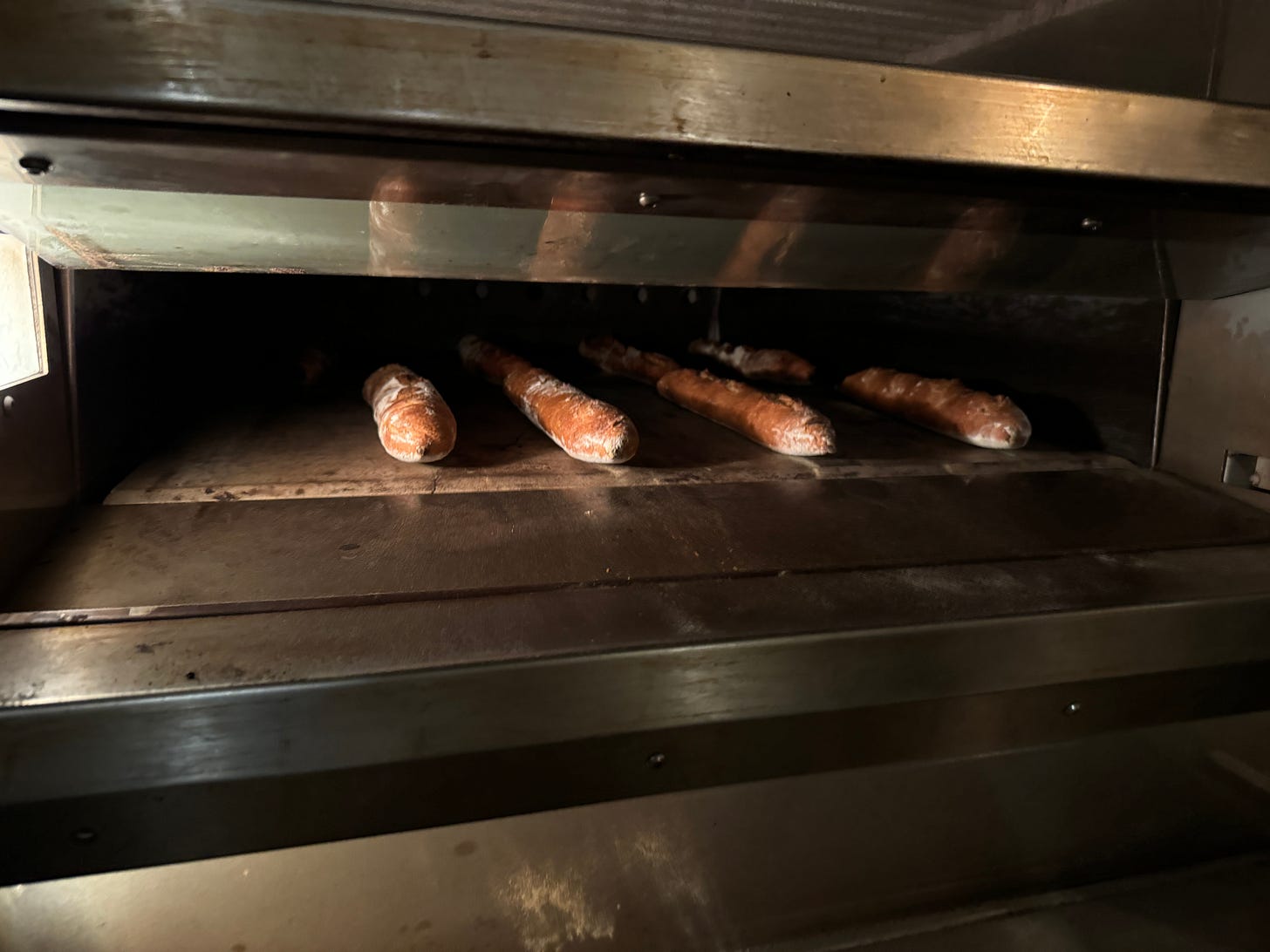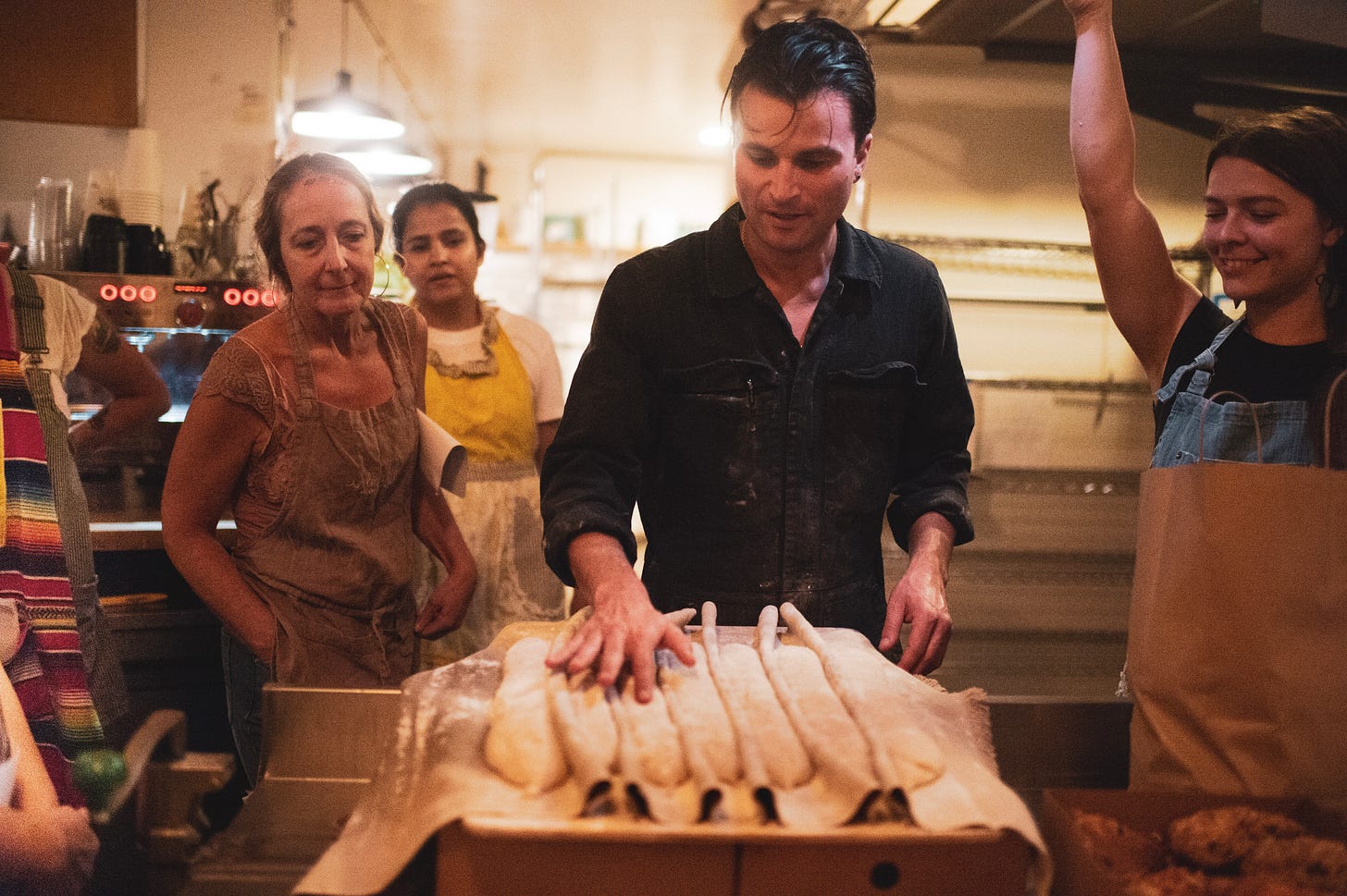I started to figure out that some things could remain mysterious, that you could not understand them and believe in them at the same time. Funny, that I had spent so much time trying to shrink the world to a manageable size when that smallness so broke my heart, when the burden of it weighed so heavily.
Melissa Febos
Maybe it’s winter. The way the morning’s take longer to rise, the way the sun seems more bright because it’s so brief, the way the cold takes away so much of a day’s possibilities and turns its precious hours into a kind of claustraphobia. The world has always seemed smaller, much smaller to me in the winter.
Bakeries are different too. Time is leavened more slowly in a December bakery. The dough always needs more yeast; the water in the mixing bowl needs to be warmer, about the temperature of blood; the oven becomes a place to congregate, and sometimes you can smell the singed hair of a baker who stood too close to its warmth; customers linger longer after a purchase in the winter, talking about things that don’t need talking about out loud.
I don’t have a bakery anymore. So I travel now–to teach, to consult–and I layer my clothing according to the winters I’ve recently arrived in: Bermuda, Poland, Stockholm, San Francisco. Travel is meant to make the world bigger–but airports just make the world feel smaller to me. During each arrival I find my body in a different time zone than my watch; the money in my pocket has strange colors and stranger faces. When Customs asks me if my trip is for business or pleasure I laugh knowing that, at 37, I still don’t know the difference. So I wait for that voice to say, “You are now free to move about the cabin.”
It’s baguettes. Always baguettes. That’s what my students want to learn most. Maybe because the crust is so brittle and tender, or because of its aromas of popcorn and malt, of sweet yeast and butter. Maybe it’s the rich brown color if it’s baked well, or the tiny blisters on the crust that betray solid fermentation, leopard spots bakers call them. Maybe it’s the moist crumb, creamy as a brioche. Maybe it’s their portability, the fact that a baguette can be carried and consumed, can be torn and shared. Maybe it’s because we should eat a baguette the day we buy it. There’s pleasure in knowing about this perishability.
For bakers baguettes are the yardstick of our craft. The baguette, often weighing just 350 grams, is the summary of our skill: how beautiful, how delicious, how aromatic, how evenly shaped. It is here that the crossroads of our talent as bakers can be seen and tasted and smelled and felt: it should be light, it should be dark-crusted to a color between clay and molasses, and its inside should be moist and creamy and al dente from that first bite.
So everyone I teach wants to learn baguettes because they want to learn what validates them; I was no different. I give them my recipe. We measure its ingredients, we gently mix the dough together, let it rest for four hours, mix it again, and then fold it a few times before it rises overnight in a cold fridge. The next morning there’s frost on the ground (or in St. George’s, Bermuda just dew and a breeze). But inside these bakeries it’s warm and soggy from the bodies of bakers and the oven. And in the cold of the dawn we cut this baguette dough, portion it and pre-shape it and let it rest and shape it again. We let it proof, til doubled in size, and then we bake it. Students loiter around the oven, rubbernecking at its glass window as the loaves bake, in awe at the mystery of how in just 20 minutes this limp piece of dough becomes a loaf of bread. Each time the baguettes come out of the oven–singing with heat, whistling as the steam escapes from the too-hot inside and splits their crust, glimmered in a rich sheen from a full bake–everyone takes a deep breath. Then exhales, smiling. We made something beautiful and the world just got bigger.
For me, the solution to fear is curiosity and presence. I can’t be terrified and curious at the same time.
Mary Karr
As a kid the world felt tremendously big. And there was generosity in its vastness: no matter how fast I ran, how late I tried staying up for Santa, or how much cake I ate at a birthday party there always seemed to be more. Nothing could extinguish the moment I was firmly in; not even time–or calories–had consequences. My metabolism, actual and spiritual, was as fast as the world was large. Early childhood felt like a bowl of proofing dough that just grew and grew and grew: no matter how much I poked at it, it never deflated.
I’ve been going through a lot of pain lately. The kind of pain which is really just change. But it’s the kind of change I don’t have clarity on, it’s the kind of change that happens when a recipe you’ve been making for years just doesn’t come out the way you’re used to. So the solution to this fear seems to be to double down, to change the ingredients but not the process, and otherwise do what’s familiar. But what’s familiar is what got me here. And this fear of change makes my world smaller; it threatens what I realize now is a cul-de-sac I’ve been looping around. All along I was calling it a highway.
When I show up to teach a class everything is unfamiliar: the oven, the flour, the bakers, the salt. But the unfamiliar becomes familiar when I remember that I’ve been touching these things everyday for the past sixteen years. So I get my bearings: I taste the flour, I drink the water, I eat the salt, I put a hand in the oven to read its heat. And I shake hands with the bakers. Then with our bodies, we make the bread. Our gestures connect us to the process–folding the baguette into a neat pouch, tightening the sourdough into a taut boule, stretching the ciabatta into a rustic slab. Our materials and our tools–steel, wood, marble, brick–have as much texture as our hands which use them: durable, soft, pliable, worn. And with each motion, with each gesture, the rituals of breadbaking remind me of what I cannot see by what I am feeling and touching: I don’t think about the fear then, because it’s not something I can hold. We’re all curious what the bread will taste like. We take a picture of the loaves, tear one apart while it’s hot, and pass it around. And it’s then, with that tiny piece of bread in my hands, that the world becomes bigger. Even in the winter.








I loved the quotation from Fabre that appeared at the beginning of your email today. “History celebrates the battlefields whereon we meet our death, but scorns to speak of the plowed fields whereby we thrive. It knows the names of the king’s bastards but cannot tell us the origin of wheat. This is the way of human folly.”
That cul-de-sac you've been looping around in - I know it well because I've been there (or am there) too. I was thinking back to when my current ennui with my work and desire to grow started and it was with the class I took with you in October. It was inspiring and, like the ephemeral quality of those winter-time feelings you describe, it stirred something up in me at just the right time and I haven't been the same since. Where does our work take us? Who knows, but you do open doors with the work you do. I can say that so much of what you talked about over those two days when I was in the same room as you: the quality of grains, how they are grown, stored, and milled, really stuck with me and elucidated a set of feelings I haven't quite been able to put a finger on before. Thank you for the inspiration...who knows where we will go with what we know and feel...